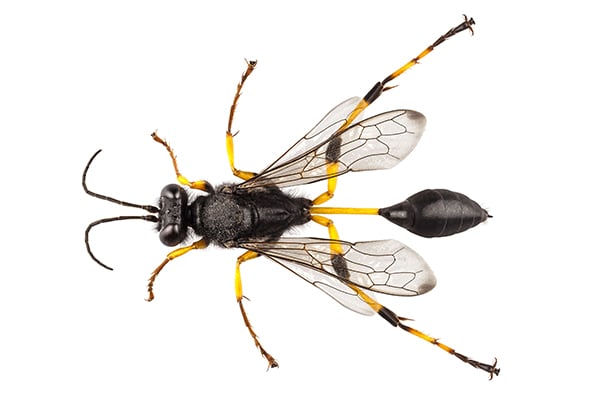Mud Dauber Wasp Control

This group of wasps gets their name from the fact that they construct their nests of mud. These stinging insects are typically considered nuisance pests, and are found throughout the United States.
BEHAVIOR
Mud daubers are solitary wasps; they are not social and do not live in colonies. Mud daubers overwinter as full-grown larvae, pupate in spring, and emerge shortly thereafter. Females construct nests of mud. Mud daubers do not defend their nest, and only rarely sting (i.e., in self-defense, if grasped).
Mud daubers typically select a sheltered site to build their mud tubes. Favorite sites include rustic wood siding, masonry walls, under eaves, porch ceilings, in garages, attics, open sheds and barns. Nests typically exhibit round holes in them as the wasps emerge. This indicates that the nest is probably old and inactive after springtime.
CONTROL AND PREVENTION
One can simply scrape the nests from attachment surfaces using a scraper or putty knife and sweep the mud fragments from any paved surfaces below. The non-aggressive female wasps will not attack and rarely rebuild nests in the same location from which they were just removed during the same year.
APPEARANCE
Adult mud daubers are 3/4 to 1 inch long and slender. The body color is usually black or metallic bluish-black with pale to yellow markings. The wings may be clear or dark. The abdomen is slender with a stalked waist.
PROFESSIONAL CONTROL
Mud daubers are beneficial insects and help control spiders. If the nests are located near human activity, then control may be warranted.
A trained Plunkett’s technician can remove the nests using a scraper attached to an extension handle. Mud dauber nests can be removed from buildings without use of insecticides. However, future activity can be discouraged in a given area with the application of a residual insecticide. The nests themselves should not be sprayed with a liquid insecticide because this will create a muddy mess on and beneath the attachment sites.







